The
Baroque Dance of Death
|
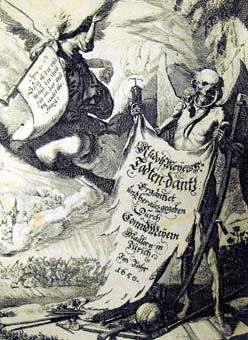
Frontispiece from the
Meyers'
Dance of Death (Gemmell 13)
|
In the 17th Century, depictions of the Dance of Death in book
illustration become more elaborate and decorative. As technology
advanced, copper engraving offered artists a more sophisticated
technique for creating their images in comparison to the earlier
cruder wood blocks. Satire was out, and elegance, skill and
detail were in. These baroque style illustrations have
ornamental influences and are able to provide finely detailed
interiors and landscapes.The Dance of Death theme was
therefore taken up for its imaginative possibilities: Holbein
"merely provided an artistic stepping stone," according to
Collins.
|
| Rudolf and Conrad Meyer's Dance
of Death was first published in Zurich in 1650 under the title
Sterbenspiegel. It contains sixty engravings. It was begun by Rudolf Meyer, but he died
before its completion.
As the plates show, the style and
presentation of the Meyers' Dance of Death constitutes a
complete departure from Holbein's designs.
A point to note is the remarkable characterisation of
Death himself. He now appears as a winged
figure, bearing a spear. He also seems less skeletal, with
flesh and muscle instead of bare bones.
The examples of the Empress and the Emperor (shown below) mirror the settings, poses and
scenarios devised by Holbein. But the Meyers' use of metal engravings
result in illustrations that are far more elaborate: even the
background architecture shows a wealth of detail. The Emperor's
scene features a multitude of contemporary subjects and
courtiers all depicted in meticulous detail, right down to the
dogs in the front left corner.
Overall these scenes offer a greater sense of drama, typical
of the baroque style. The artists are clearly interested in the
topic for its artistic potential as opposed to its satiric or
didactic potential. |
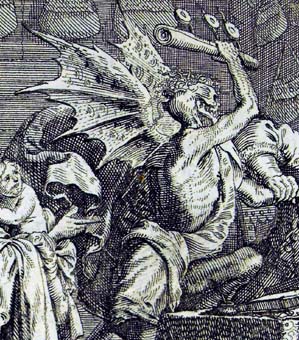
Detail of Death's
anatomy (Gemmell 13) |
|
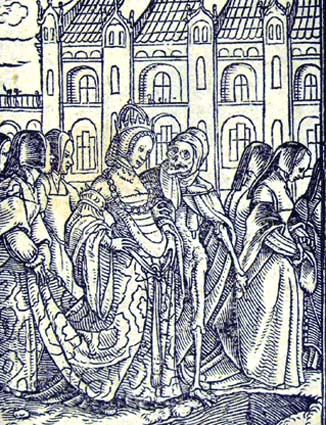
Holbein's Empress (Gemmell 1) |
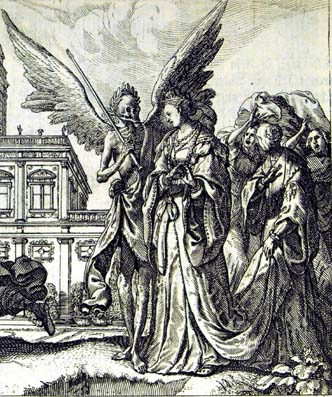
Meyers' Empress,
offering a more ostentatious scene. Note
the greater sense of action and alarm in the attendants
(Gemmell 13)
|
|
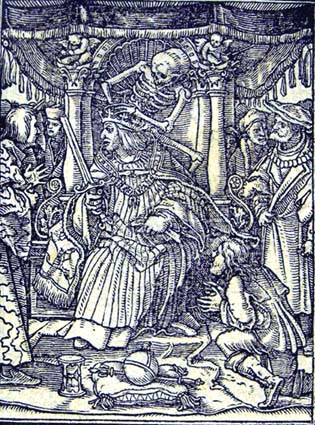
Holbein's Emperor (Gemmell 1)
|
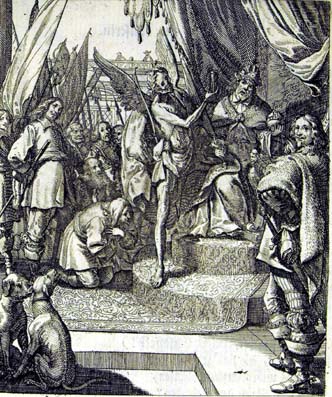
Meyers' Emperor, holding
a more lavish and populated
court than Holbein's (Gemmell 13) |
|
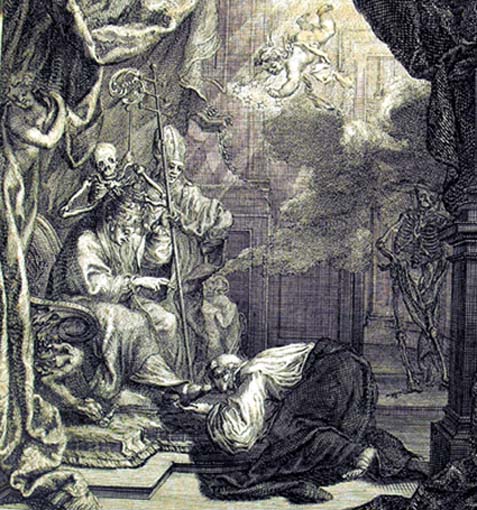
Rentz's Pope shows vast
differences in style to Holbein,
including an extra skeleton,
and angels (SM 1655) |
|
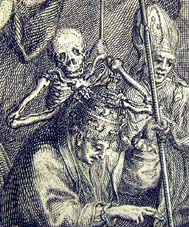 |
|
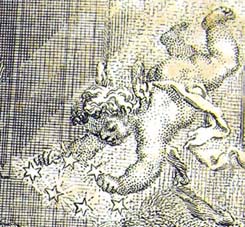
Detail from Rentz's
engraving |
|
| Another set of illustrations that employs this
more elaborate style of engraving are those by Michael Rentz in
the 1753 publication Geistliche Todts-Gedancken. Again, Rentz uses
the original premise of Holbein's designs but imposes them onto
richly detailed backgrounds - frequently, with lavish interiors. In
the image of the Pope (shown above), Rentz creates a sense of mysticism,
with the dark shadows and swirling incense. This time, two
figures of Death have arrived to claim the Pope. |
|
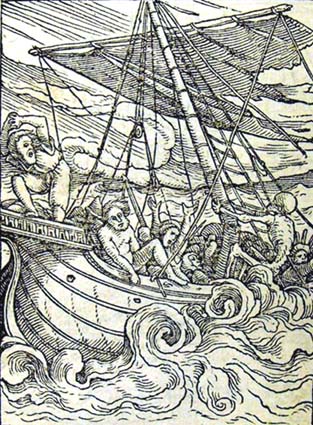
Holbein's sailors
anticipate their approaching
shipwreck
(Gemmell 1)
|
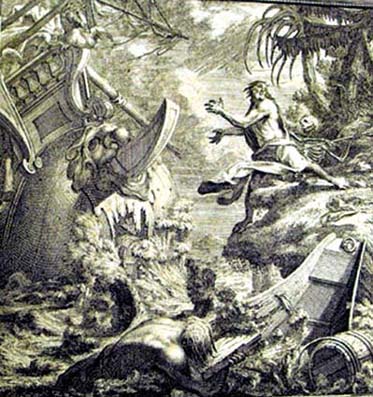
Rentz's shipwreck is in
a more advanced state of destruction as
the mighty prow of the ship rises out of the sea and crew
members are washed out to sea (SM 1655) |
| Above (to the left) is the original design of Holbein's sailors, as Death boards
their ship to drag them beneath the waves. To the right is Rentz's version. Side by side the
variance in style is
striking. Not only does Rentz devise a completely new scene
imaging the shipwreck and ensuing carnage, but he depicts the
detail of the boat dashed on the rocks, and the
survivors attacked by Death. |
|